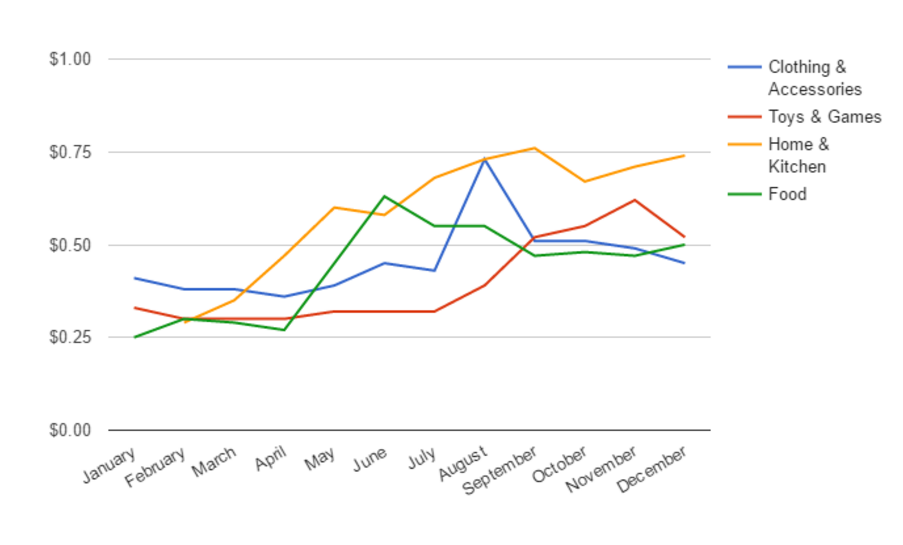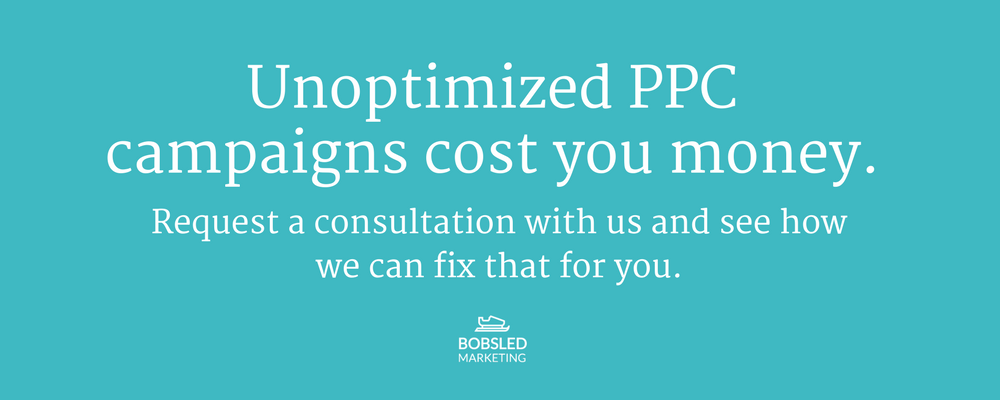Did you know that Amazon Sponsored Ads grew by 100 percent in 2015? For many brands, it’s both good and bad news.
The good news is that more brands are seeing a great deal of success using Amazon pay-per-click (PPC) advertising campaigns. You might even be among them. For those who haven’t refined their campaigns quite yet, the success of the PPC platform as a whole means there is still an opportunity to find areas of growth.
No matter where you are on your PPC journey, the marketplace is about to get more expensive. Why?
Even though Amazon PPC campaigns still aren’t quite as popular as Google AdWords or Facebook Ads (see the key differences between them here), the level of competition on Amazon is rising rapidly. More brands are piggybacking off the success of Sponsored Ads to sustain their growth on Amazon, and others are relying less on paid social ads to drive traffic to their Amazon listings.
If you’re a brand using Amazon PPC services, you should make sure you understand the root causes of this price spike, and start thinking about how your brand will respond.
Cause #1: More buyers leads to more sellers
Amazon accounted for a staggering 60 percent of all online sales in the U.S. in 2015. According to more recent research, that equates to 1,000 new sellers joining various Amazon marketplaces around the world every day as they try to take advantage of the incredible growth.
More sellers equal more listings competing for first page results on popular search queries. This could be really damaging for brands with a large number of products being sold on Amazon. As a result, we’ll see more brands use PPC campaigns as a shortcut to putting their products in front of potential buyers.
Here at Bobsled Marketing, we’re already seeing this trend. Sponsored Products clicks grew by more than 150 percent in 2016, according to a press release from Amazon itself.
And the clear impact from this impressive growth is that PPC costs are going to rise across the board.
Cause #2: PPC competition is growing—daily
According to the same press release, the number of sellers using Sponsored Products worldwide jumped by more than 100 percent in 2016. What does that mean for you? Essentially, there are now twice as many other brands trying to bid on the same keywords that you are. And that is going to dramatically change PPC costs.

How? Every time a user searches for keywords you’re bidding on, they actually initiate an auction. You and other sellers are bidding on how much to pay to win that user’s attention. Just as with an auction for a sought-after vintage car or piece of artwork, more sellers will result in more bids, which will inevitably drive up the winning price.
Cause #3: Amazon is changing its terms and conditions
In order to deal with counterfeiters and scammers trying to take advantage of the search and PPC algorithms, Amazon regularly changes its terms and conditions. This has recently affected the legalese around reviews.
These changes have reduced the rate at which all brands—but particularly new ones—have their products reviewed on Amazon. Suddenly, it’s become quite difficult for these newer brands to get honest reviews and keep up with more established sellers, which can have hundreds or even thousands of reviews.
You might be in this exact spot—how do you compete with a brand in your category that has 500 reviews against your 25, even if your reviews are stronger on average? Reviews are the social signal that speaks to a product’s quality. On Amazon, they’re the trusted way to build confidence in your brand. To make up for the reduced flow of reviews, many brands are accelerating their PPC spending to drive ahead of the competition. This is especially true if brands are lacking in reviews compared to their competition.

And yes, the evidence is real
Amazon itself has produced a great deal of evidence proving that the Sponsored Products program is growing incredibly fast. Some might say it’s just Amazon gloating a bit, but here at Bobsled Marketing, we’ve been watching the numbers ourselves. Do you think our numbers agree or disagree with Amazon’s?

As you can see, the growth in average cost-per-click (CPC) is growing. It’s not linear across the board, but the trendline is clear. But, it’s easy to make some definitive conclusions:
Home & Kitchen is growing constantly. That growth has been relatively linear over the last year, and is likely to continue its upward trend.
Food and Clothing & Accessories are subject to seasonality. Companies in these categories should ensure they strategize not only to have proper inventory during these times, but leverage PPC to take advantage of them.
Toys & Games CPC is finally rising. We watched this category with interest throughout the year, as it seemed resilient to the general trend in rising average CPC, but it ended up growing dramatically in the second half of the year.
Here’s how you should respond
The best strategy for navigating a more competitive and expensive PPC market on Amazon isn’t necessarily to just increase your spend in line with the overall trends. Instead, you need to develop smarter strategies to make the most of every dollar you commit to Amazon. Here are some basics:
1. Make sure Amazon knows what you’re trying to do
If Amazon is placing your advertisements in front of the wrong people, you’re wasting your money. Set up an automatic campaign over the course of a week, and then examine the keywords with the most impressions. If that doesn’t line up with your product, it’s time to start refining.
2. Get smarter about how you organize campaigns
Here at Bobsled Marketing, we often see brands who give all their campaigns similar names, and then can’t make any sense of the results. Be specific in your naming conventions, and use dates—that way, you’ll be able to easily understand what’s working and what needs refinement.
3. Find a PPC partner
Sometimes, an outside perspective is just what you need to see things differently and make smarter choices. Bobsled Marketing’s PPC Management Service is just one of many options to help get your PPC campaigns moving a massive spend.
4. Be patient
This is the No. 1 tip from our PPC Specialist Brent Zahradnik, no matter the size or category of a brand. One or just a handful of clicks say very little about the success of your PPC campaign, and sales can take up to 48 hours to register in your results. If you’re patient, the right results—and the signal of what you should do next—will come.
Bottom Line
The rapid growth of Sponsored Products and rise in PPC costs are actually good news for brands—it means the system has been proven to work again and again. By understanding the landscape, implementing the right techniques, and establishing strategic partnerships, you’ll be setting up your brand to best the competition and make the most of the new PPC landscape.
At Bobsled Marketing we work with dozens of brands using the Vendor Express, Vendor Central, and Seller Central platforms. Through our optimized product launch process, daily account management, PPC management, and strategic oversight, we can help you get there faster.
.png)


